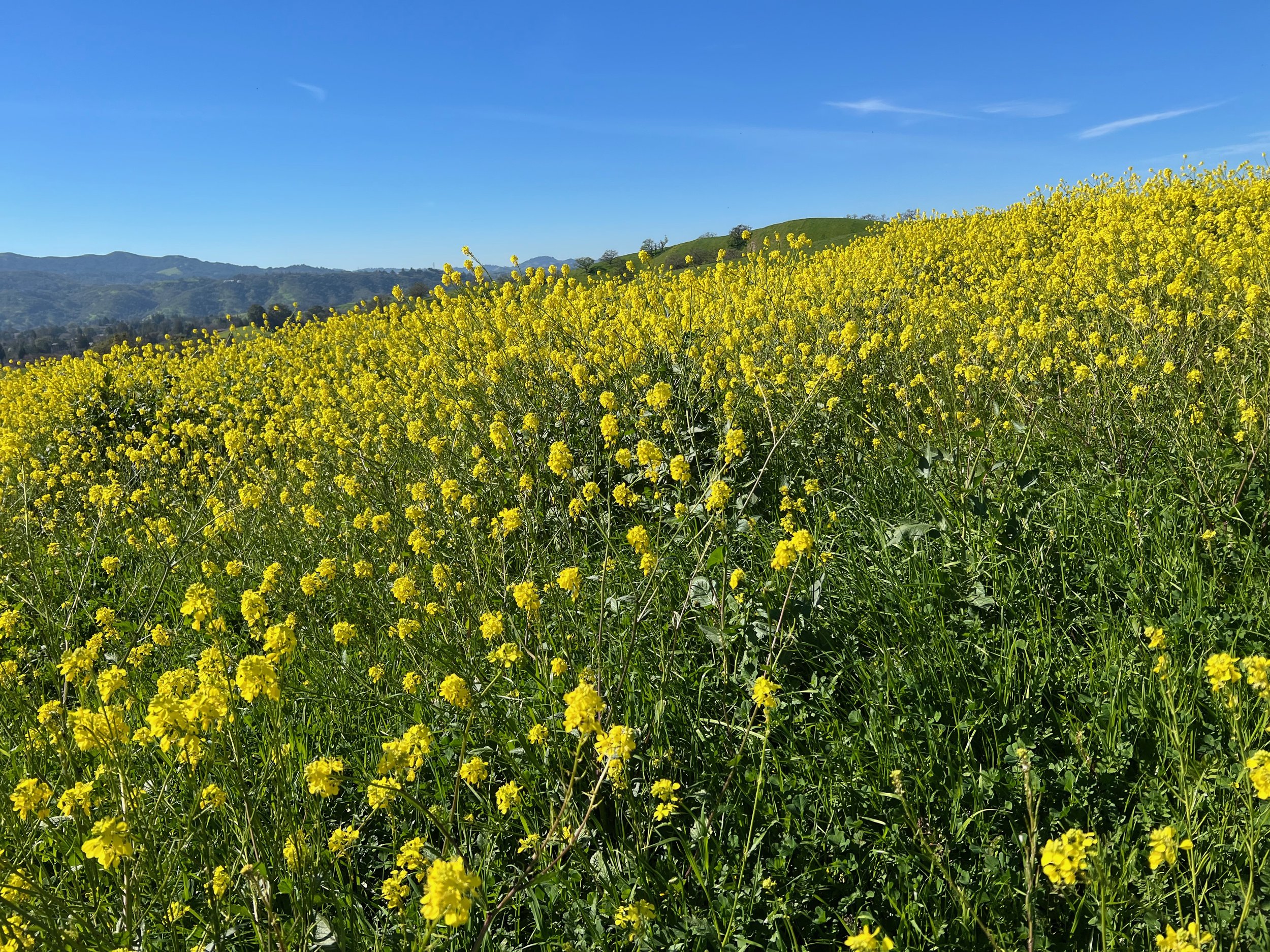If the poet Robert Frost is to be believed, anyway! I am not sure I agree, however, that gold is “her hardest hue to hold.” Certainly, gold flowers are abundant in early spring, and I can’t help but wonder… why?
Narrow-leaved Mule’s Ears
My instincts tell me that it is something to do with the pollinators that are emerging from hibernation at the same time. As soon as daytime temps start to reach 50 degrees (F), native bee queens will start to come out from their cozy winter dens.
California Buttercup
Right now, our hikes are simply overflowing with yellow flowers, no matter where we choose to walk. And this past weekend, Tom and I were lucky enough to witness a miracle of nature on the Burma Road Trail on Mount Diablo, not far from Castle Rock.
Fiddlenecks
There are 1600 native bee species in California, and I have no idea which one this was. They were emerging from holes in a section of the trail that was made of clay and sandstone, quite hard-packed and dry. There were hundreds of bees flying just above the surface of the path, in a frantic circular pattern. We stopped to watch, and then Tom saw a head emerging from a tiny hole in the path. We watched as a female bee dug out the rest of the mud from the entrance, then crawled out. Immediately a male bee pounced on her and mated with her for several seconds. This pattern repeated itself over and over as we watched, and we realized that the males had emerged first, and had been flying over the path just waiting for the females to show themselves.
California Golden Violet
As you can imagine, we were entranced and delighted. Our online searching has not turned up the name of this bee species, but we are hoping one of our readers might know and will share in the comments. Meanwhile, I wondered: Have certain types of native bees evolved to exit hibernation at the same time as the native plants with yellow flowers bloom?
California Poppy
I’ve looked at several studies now, and while it is true that color is what makes flowers stand out to pollinators from a distance (something is needed for the flower to stand out from the field of green), it’s the un-seeable-by-human-eyes UV patterns in the centers of each flower that attract the bee in to the pollen (and nectar). Yellow flowers do attract pollinators, but so do white flowers, and blue flowers. And pollinators are opportunists; they’ll eat whatever they can find, especially in a Mediterranean-dry climate where winter rains promote flower blooming.
Sticky Monkey Flower
In other words… no one really knows.
Western Wallflower
It’s good to have some mystery in life. It’s good to ask questions for which we do not know the answer. It’s good to ponder these mysteries and let them delight us.
Glue-seed
And it’s especially good to get out into the lovely late-winter sunshine and see what’s blooming… and what’s buzzing.








































